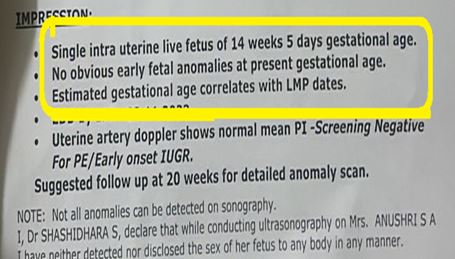Ayurvedic management of Tubal Block Infertility Associated with Polycystic Ovarian Syndrome: A Case Study
DOI:
https://doi.org/10.21760/jaims.9.7.46Keywords:
Tubal Block Infertility, Polycystic Ovarian Syndrome (PCOS), Vandhyatva, AyurvedaAbstract
Polycystic Ovary Syndrome (PCOS) is a common endocrine disorder in women of reproductive age, characterized by hormonal imbalances that cause irregular menstruation and ovarian cysts. A significant but often overlooked complication of PCOS is its association with tubal infertility, resulting from issues such as tubal blockages or dysfunctions, making conception more challenging. Infertility affects roughly 1 in 6 people globally, with about 70% of women with PCOS experiencing infertility, and tubal factor infertility accounting for 25-35% of female infertility cases. This case study examines the management of tubal blockage and PCOS through Ayurvedic treatments. A 36-year-old married woman with a history of PCOS reports no significant issues over the past six years of marriage, with irregular menstrual cycles. Clinical findings from a USG revealed bilateral polycystic ovaries, and an HSG indicated a blockage in the right fallopian tube. This infertility case was treated with a combination of Shodhana and Shamana Chikitsa was given to resolve the underlying Samprapthi from 10/7/2022 to 26/7/2023. After 12 months of treatment, the tubal blockage was resolved, PCOS had decreased, and epileptic attacks were reduced. Additionally, the absence of Reidel's lobe of the liver was noted, and the fatty liver decreased from Grade II to Grade I. The patient received a positive urine pregnancy test result on July 26, 2023, and gave birth on June 6, 2024. In this instance, Ayurveda demonstrated its reliability in treating infertility and PCOS, offering effective and holistic methods for managing these conditions.
Downloads
References
Teede HJ, Misso ML, Costello MF, Dokras A, Laven J, Moran L, et al. Recommendations from the international evidence-based guideline for the assessment and management of polycystic ovary syndrome. Hum Reprod. 2018;33(9):1602-1618.
Palomba S, Falbo A, Russo T, Orio F Jr. Evidence-based and potential benefits of metformin in the polycystic ovary syndrome: a comprehensive review. Endocr Rev. 2015;36(1):1-50.
World Health Organization (WHO).
Liu J, Wu Q. Measuring the global disease burden of polycystic ovary syndrome in 194 countries: Global Burden of Disease Study 2017. [no journal information provided].
Sushruta. Sushruta Samhita, Sharira Sthana. 3rd ed. Varanasi: Chaukhamba Orientalia; 2007. Chapter 2, Verse 33.
Charaka. Charaka Samhita, Sharira Sthana. 3rd ed. Varanasi: Chaukhamba Orientalia; 2009. Chapter 8, Verse 18.
Vagbhata. Ashtanga Hridaya. Translated by K.R. Srikantha Murthy. Varanasi: Chaukhambha Krishnadas Academy; 1995. Shareera Sthana, Chapter 1, Verses 20-25.
Tewari PV. Ayurveda Prasuti Tantra Evam Stri Roga, Stri Roga. Part-II. Varanasi: Chaukambha Orientale; 1996. p. 169.
Goyal M, et al. Effect of herbal formulation on hormonal imbalance in PCOS patients. J Ayurveda Integr Med. 2012;3(3):142-147.
Singh R, et al. Lipid-lowering and detoxifying effects of Kanchanara Guggulu in PCOS. J Clin Ayurveda. 2013;7(4):293-301.
Patel S, et al. Role of antioxidants in reproductive health and PCOS management. Int J Ayurveda Pharm. 2012;4(3):211-217.
Rao AR, Sharma PV. Ayurvedic remedies for gynecological disorders. J Ayurveda Integr Med. 1999;7(2):81-90.
Jain S, Sharma P. Effects of Ayurvedic remedies on blood circulation and fertility. Int J Ayurveda Med. 2013;6(2):100-110.
Vagbhata. Ashtanga Hridaya. Uttarasthana, Chapter 6, Verses 26-33. Varanasi: Chaukhamba Surbharati Prakashan; 2013.
Sharma P. Role of Mahakalyanaka Ghritha in the management of Vandhyatwa and Apasmara. J Ayurveda Integr Med. 2016;7(2):115-120.
Dhanani SS. Detoxification therapies in Ayurveda. Ayurvedic Med Today. 2020;12(3):33-40.
Kumar K, Singh S. Role of Panchakarma in the management of PCOS: A review. J Ayurveda Integr Med. 2014;5(3):153-157.
Tewari PV. Kashyapa Samhitha or Vridhajivakiya Tantra. Varanasi: Chowkambha Viswabharati; 2008. p. 266.
Visavadiya NP, Narasimhacharya AV. Hypolipidemic and antioxidant activities of Glycyrrhiza glabra (Linn) in rats. Mol Nutr Food Res. 2006;50(11):1080-1086.
Mohammadi M, Heidari N, Heidarzadeh M, Asghari Gh, Rahmani MR. The effect of Glycyrrhiza glabra extract on sperm quality and reproductive potential in male rats. Andrologia. 2018;50.
Singh R, Sharma J, Goyal R, Sharma A. Phytochemical analysis and estrogenic activity of Shatavari (Asparagus racemosus) in experimental rats. J Ethnopharmacol. 2009;126(1):125-130.
Chaudhary R, Jahan A, Ahmed S, Parveen N. Effect of Asparagus racemosus (Shatavari) on cervical mucus and sperm count. Int J Green Pharm. 2012;6(2):152-156.
Russo A, Borrelli F. Bacopa Monnieri, a reputed nootropic plant: An overview. Phytomedicine. 2005;12(4):305-317.















